FIND THE MISSING ANGLES WITH TRANSVERSAL
When two lines are parallel and they cut by the transversal, the following pairs will be congruent.
- Corresponding angles
- Alternate interior angles
- Alternate exterior angles
Sum of consecutive interior angles on the same side of the transversal will be equal to 180 degree.
Find the angle x in the figure given below. Give your reason.
Example 1 :
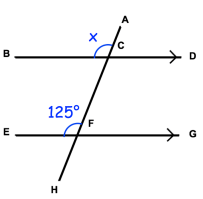
Solution :
∠ACB = ∠CFE
Because they are corresponding angles.
So,
x = 125
Example 2 :
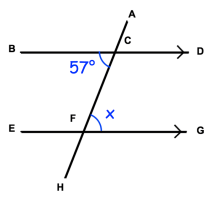
Solution :
∠BCF = ∠CFG
Because they are alternate angles.
So,
x = 57
Example 3 :
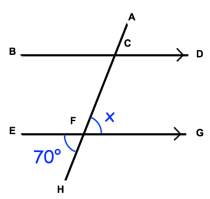
Solution :
∠EFH = ∠CFG
Because they are vertically opposite angles.
So,
x = 70
Example 4 :
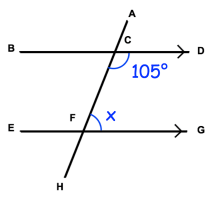
Solution :
∠DCH = ∠CFG
Sum of consecutive interior angle is 180.
x + 105 = 180
x = 180 - 105
x = 75
Example 5 :
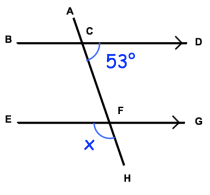
Solution :
∠DCF = ∠EFH
∠DCF = 53
∠CFE + ∠EFH = 180
53 + x = 180
x = 180 - 53
x = 127
Example 6 :
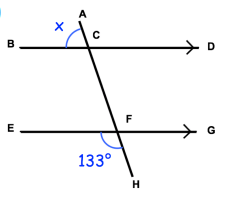
Solution :
∠BCA = ∠DCF (Vertically opposite angles)
∠CFG = ∠EFH (Vertically opposite angles)
∠EFA = ∠BCA = x (Corresponding angles)
∠HFE + ∠EFA = 180
133 + x = 180
x = 180 - 133
x = 47
Example 7 :
Are the lines AB and CD parallel? Explain your answer.
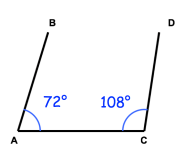
Solution :
By adding the interior angles ,
= ∠BAC + ∠DCA
= 72 + 108
= 180
The sum of interior angles is 180 degree, the angles involving here are parallel.
Example 8 :
Find the missing angle. Give reasons for your answer
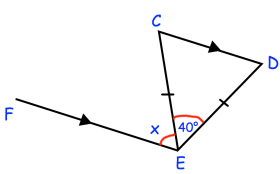
Solution :
Triangle ECD is isosceles triangle.
∠CED + ∠EDC + ∠DCE = 180
∠EDC = ∠DCE
40 + ∠EDC + ∠EDC = 180
Subtract 40 on both sides.
2∠EDC = 180 - 40
2∠EDC = 140
Divide by 2 on both sides.
∠EDC = 70
∠ECD = 70
∠CEF = x
x = 70 (Alternate interior angles)
Example 9 :
Find x.
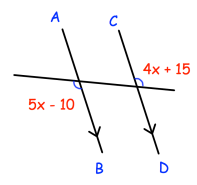
Solution :
5x - 10 = 4x + 15
(Alternate exterior angles)
Subtract 4x on both sides.
5x - 4x - 10 = 15
Add 10 on both sides.
x = 15 + 10
x = 25
Example 10 :
Find x.
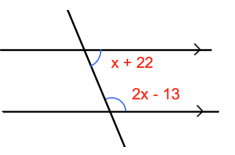
Solution :
The angles involving in the problem given above is consecutive interior angles on the same side of the transversal.
x + 22 + 2x - 13 = 180
3x + 9 = 180
3x = 180 - 9
3x = 171
x = 171/3
x = 57
Recent Articles
-
Finding Range of Values Inequality Problems
May 21, 24 08:51 PM
Finding Range of Values Inequality Problems -
Solving Two Step Inequality Word Problems
May 21, 24 08:51 AM
Solving Two Step Inequality Word Problems -
Exponential Function Context and Data Modeling
May 20, 24 10:45 PM
Exponential Function Context and Data Modeling